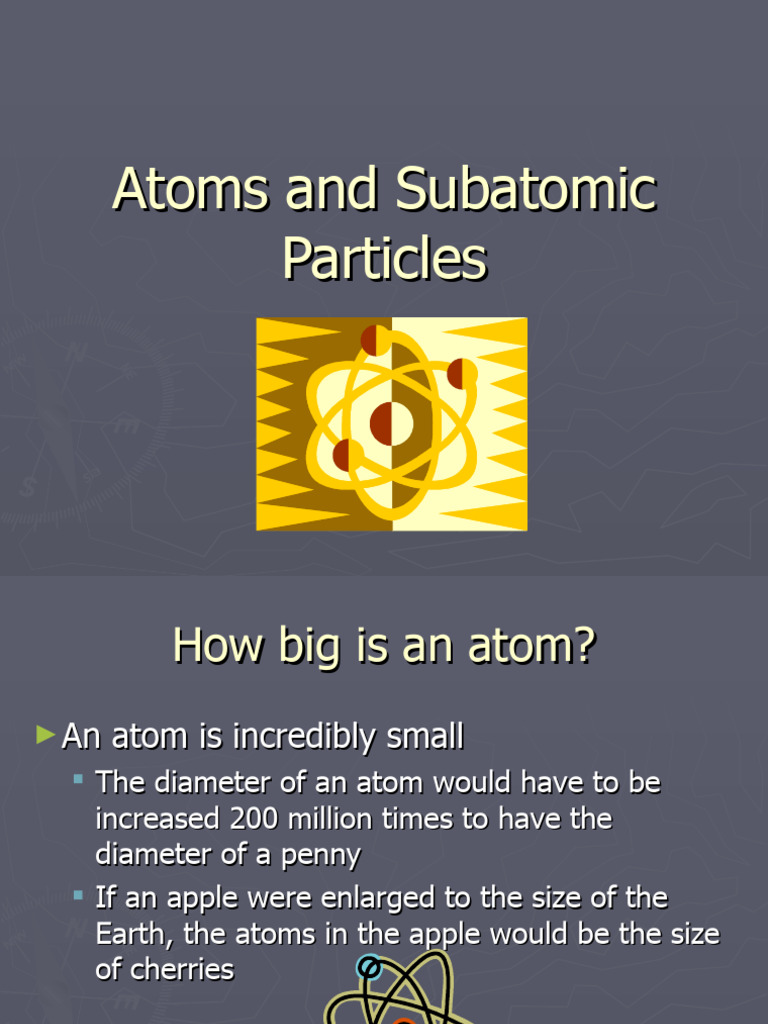Subatomic particles constitute the fundamental building blocks of matter, playing a pivotal role in the structure of atoms and the interactions that govern the behavior of the universe. Within the realm of particle physics, these diminutive entities are categorized primarily into three distinct classes: baryons, mesons, and leptons. This article seeks to delineate these categories of subatomic particles, exploring their characteristics, interactions, and the significance of their existence in the broader context of theoretical physics.
Baryons: The Building Blocks of Atomic Nuclei
Baryons are composite particles formed by three quarks, connected by the strong force mediated by gluons. The most familiar baryons are protons and neutrons, which together constitute the atomic nucleus. Protons carry a positive charge, while neutrons are electrically neutral. The structuring of these baryons is not merely a matter of form but underlies much of the stability of atomic structures. A fascinating aspect of baryons is their mass, which is primarily derived from the energy associated with the strong force that binds the quarks together, as elucidated by Einstein’s famous equation, E=mc².
Moreover, baryons possess an intrinsic property known as baryon number, which is conserved in nuclear reactions. The implications of this property are profound, guiding the transitions between different states of matter and the processes within stars, including nucleosynthesis. With an array of baryons observed, from the lightest proton to the heavier Lambda baryon, their diverse configurations serve as a focal point in the study of particle physics.
Mesons: The Gluons of Interaction
Contrasting with baryons, mesons are quark-antiquark pairs, making them bosonic in nature. These particles play a crucial role in mediating the interactions between baryons. For instance, pions, the lightest mesons, are instrumental in the strong force interactions that govern nuclear stability. The complexity of mesons extends beyond mere constructs of quark combinations; they also exhibit fascinating phenomena such as particle-antiparticle oscillation and decay, illuminating the interplay between matter and antimatter.
Mesons are characterized by their varying masses and lifetimes, which stem from the brief duration of their existence before they decay into other particles. This ephemeral nature gives rise to myriad experimental challenges and opportunities for discovery in high-energy particle collisions. Through advancements in particle accelerators, researchers probe the intricate interactions between mesons and baryons, unveiling fundamental truths about the universe at a minute scale.
Leptons: The Invisible Players
Leptons are yet another category of subatomic particles, delineated by their lack of strong force interactions. Their most recognized representatives are the electron, muon, and tau particles, each of which possesses an associated neutrino. While electrons orbit the atomic nucleus and define chemical properties, muons and taus are heavier relatives that decay into electrons or neutrinos. Despite their subtle interactions, leptons are fundamental to our understanding of electromagnetic interactions, encapsulated in the electroweak theory that unifies electromagnetic and weak forces.
A remarkable attribute of leptons is their insensitivity to the strong force, distinguishing them from baryons and mesons. Additionally, the existence of neutrinos, which remain incredibly elusive due to their minimal interaction with regular matter, opens avenues for probing phenomena such as the synthesis of elements in stars and the elusive nature of dark matter. The study of leptons, therefore, serves as an essential gateway to understanding the universe’s underpinnings.
Antimatter: The Mirror Image
The realm of subatomic particles extends into the fascinating domain of antimatter. Each particle has a counterpart known as its antiparticle, possessing the same mass but an opposite charge. The interplay of matter and antimatter raises profound questions regarding symmetry and the fate of the universe. For every electron, there exists a positron; for every proton, a proton’s antiparticle, the antiproton. The mutual annihilation of these counterparts yields energy, exemplified in the realms of both theoretical physics and potential applications such as advanced propulsion systems.
The study of antimatter exposes the asymmetrical abundance of matter over antimatter in the universe. Understanding this disparity may reveal deeper insights into fundamental constants of physics, including the origins of mass and the expansion of the cosmos. Researchers continue to conduct experiments in high-energy physics facilities such as CERN to explore these phenomena, striving to unravel one of the universe’s most enigmatic puzzles.
Concluding Reflections: The Quantum Realm’s Allure
The world of subatomic particles encapsulates a domain where classical intuition often fails, yet it beckons the curious with promises of deeper understanding. What compels scientists to invest resources into unraveling these intricate interactions? Perhaps it lies in the pursuit of answering the most profound questions about our existence: What is the nature of reality? What forces shape the cosmos? The study of baryons, mesons, leptons, and their antimatter counterparts, not only deepens our appreciation for the universe but also ignites fascination with the very essence of materiality itself.
As research in particle physics continues to evolve, unveiling one layer of mystery after another, the allure of subatomic particles persists, inspiring future generations to explore the intricate tapestry of matter and existence.












